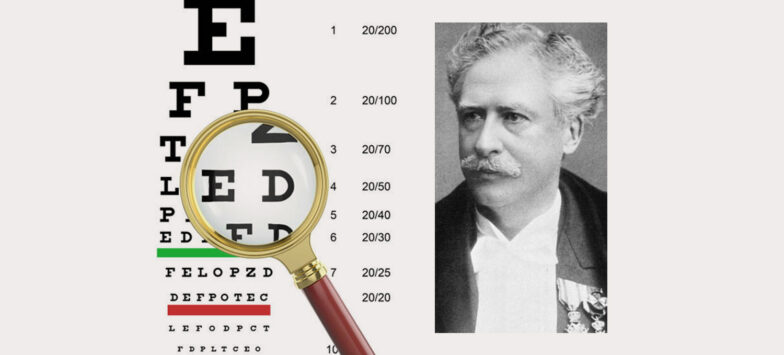
Do You Know Snellen?
Most of us are familiar with the chart an eye doctor asks us to read during an eye exam to help determine if we need glasses or contacts, or to make changes to an existing prescription. The eye chart measures visual acuity, which is clarity or sharpness of vision. But where does that chart come from, and how exactly does it work?
The Gold Standard
Dutch ophthalmologist Hermann Snellen developed the Snellen eye chart in 1862. This is the one with 11 rows of capital letters where the top row is a single, very large letter, and each row after that has increasing numbers of letters that get smaller in size. The standard Snellen eye chart only uses nine letters: C, D, E, F, L, O, P, T, and Z. Though there are other types of eye charts available, the Snellen is the most common and the most recognizable.
Those Magic / Numbers
The eye chart helps your Atlantic Eye physician measure your visual acuity in two numbers. The top number refers to your distance from the chart. The bottom number is the distance at which a person with normal sight can read the same line you correctly read. A person with 20/20 vision can see what an average person can see on an eye chart when they are standing 20 feet away.
If you have 20/20 vision, you have normal visual acuity. If you have 20/30 vision, it means your vision is worse than average: twenty feet away, you can only read letters most people can see from 30 feet. Though 20/20 is normal, some people have extra-sharp 20/15 vision, which means they can see a line on the eye chart from 20 feet away that others can only see at 15 feet.
Don’t Neglect Your Eye Exam
The goal of glasses or contacts is to bring your vision to 20/20. The best way to know if you need glasses or a prescription change is to come in for an eye exam with your Atlantic Eye physician. The American Academy of Ophthalmology recommends a baseline eye examination at age 40 and regular exams after that as advised by your doctor. Contact us today for an appointment to keep your world in sharp focus.
